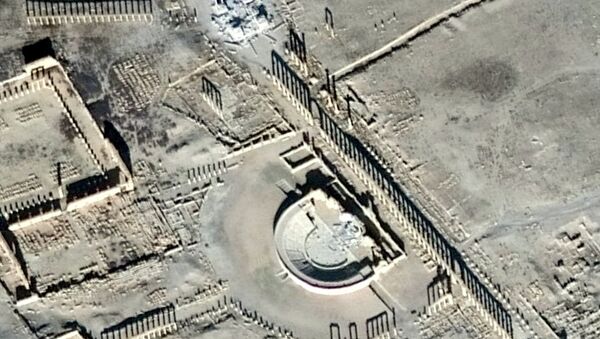MOSCOW (Sputnik) — The Kremlin hopes that sooner or later the historical monuments of the ancient Syrian city of Palmyra will be liberated from terrorists, Kremlin spokesman Dmitry Peskov said Monday.
"Unfortunately, barbarians-terrorists continue destroying monuments of human civilization, it is regrettable. We hope that sooner or later the historic sites will ultimately be liberated from… these barbarians," Peskov told reporters.
Answering a question on whether or not Russia is going to step up military activities near Palmyra, Peskov stated he could not inform the reporters about tactics and strategy of operations in Syria.
Earlier in the day, the Russian Defense Ministry published a video that showed some of the most precious relics of Syria’s ancient Palmyra city devastated by the Daesh terror group, outlawed in Russia. According to the ministry, the video proves that Islamists had blown up the proscenium, the central part of the Roman-era amphitheater, and columns of the 16-column Tetrapylon, which dates back to 270 A.D.
Daesh seized Palmyra, which was the capital of the Palmyrene Empire and one of the richest cities of the Roman Empire, in May 2015. Terrorists destroyed a number of historic sights designated as UNESCO World Heritage Sites, including the Arch of Triumph, the Temple of Baalshamin and the Temple of Bel. Jihadists also looted the national museum and the famous Palmyra’s necropolis.
Less than a year after that the Syrian army supported by the Russian Aerospace Forces managed to liberate Palmyra. Russian specialists demined the historic center as well as residential areas of the city. Russian historians and renovators visited Palmyra in early July 2016 and prepared a report assessing the condition of the damaged sites and costs of the renovation works. However, in December 2016, the city was retaken by jihadists.
Russian President Vladimir Putin commented on the Daesh offensive on Palmyra. According to the Russian leader, the situation in Palmyra was a result of discordant actions of different players in Syria.



